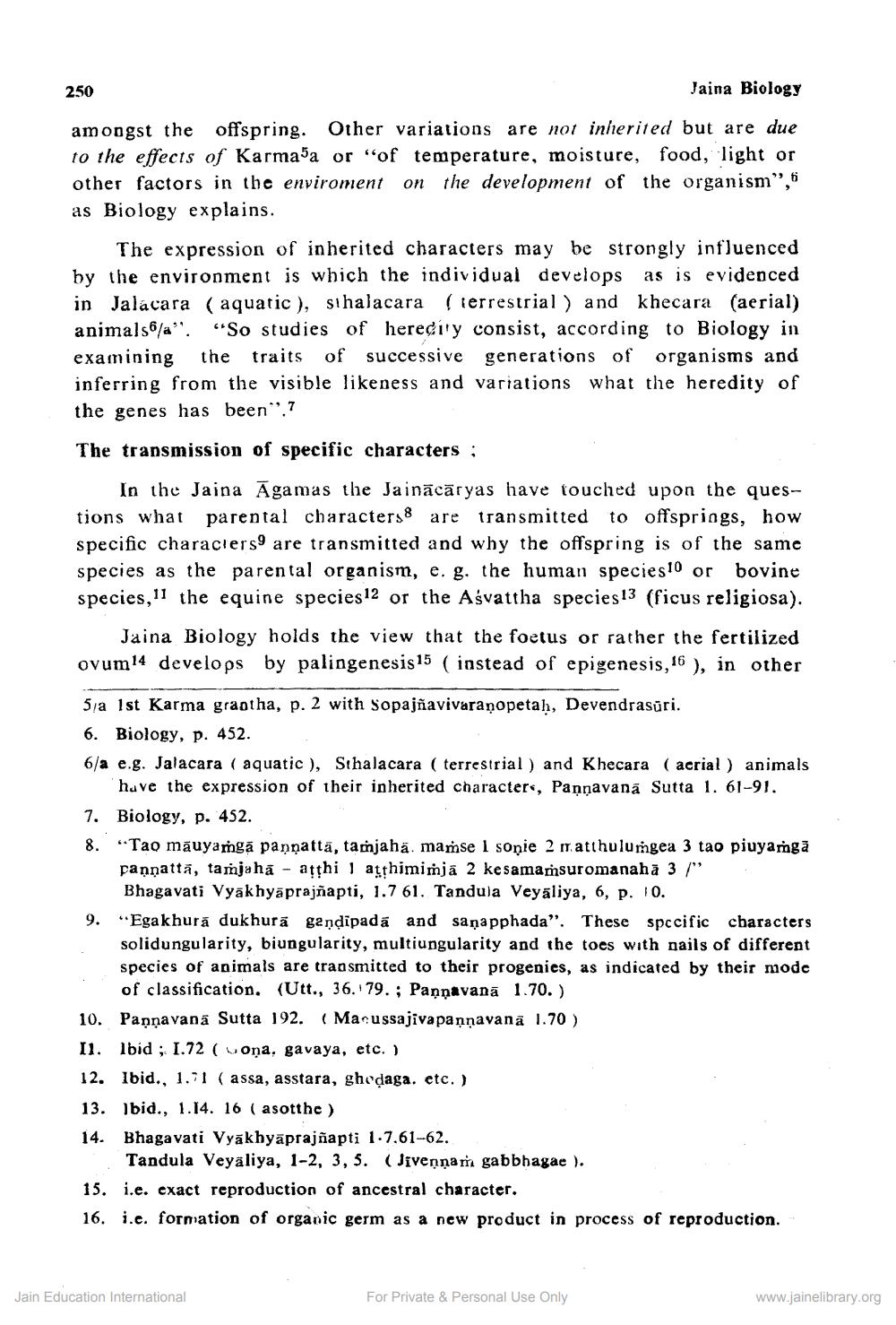________________
250
Jaina Biology
amongst the offspring. Other variations are not inherited but are due to the effects of Karma'a or "of temperature, moisture, food, light or other factors in the enviroment on the development of the organism", as Biology explains.
The expression of inherited characters may be strongly influenced by the environment is which the individual develops as is evidenced in Jalacara (aquatic ), si halacara (terrestrial) and khecara (aerial) animals6/a". "So studies of heredity consist, according to Biology in examining the traits of successive generations of organisms and inferring from the visible likeness and variations what the heredity of the genes has been":7
The transmission of specific characters ;
In the Jaina Āgamas the Jainācāryas have touched upon the questions what parental characters are transmitted to offsprings, how specific characters are transmitted and why the offspring is of the same species as the parental organism, e. g. the human species10 or bovine species, 11 the equine species 12 or the Asvattha species13 (ficus religiosa).
Jaina Biology holds the view that the foetus or rather the fertilized ovum 14 develops by palingenesis 15 ( instead of epigenesis, 16 ), in other
5/a 1st Karma graptha, p. 2 with Sopajñavivaranopetah, Devendrasūri. 6. Biology, p. 452. 6/a e.g. Jalacara ( aquatic), Sthalacara ( terrestrial) and Khecara (acrial) animals
have the expression of their inherited characters, Pannavanā Sutta 1. 61-91. 7. Biology, p. 452. 8. "Tao māuyamgá pannatta, tamjaha. mamse l sonie 2 matthulumgea 3 tao piuyargā
pannatta, tamjahā - atthi I atthimimja 2 kesamamsuromanahā 3/" Bhagavati Vyākhyāprajñapti, 1.7 61. Tandula Veyaliya, 6, p. 10. *Egakhurā dukhurā gandipada and saņapphada”. These specific characters solidungularity, biungularity, multiungularity and the toes with nails of different species of animals are transmitted to their progenies, as indicated by their mode
of classification. (Utt., 36. 79. ; Pannavanā 1.70.) 10. Paņņavana Sutta 192. (Marussajivapaņņavana 1.70 ) 11. lbid ; 1.72 ( oņa, gavaya, etc. ) 12. Ibid., 1.71 (assa, asstara, ghedaga. etc.) 13. Ibid., 1.14. 16 ( asotthe ) 14. Bhagavati Vyākhyāprajñapti 1.7.61-62.
Tandula Veyaliya, 1-2, 3, 5. (Jiveņņam gabbhagae ). 15. i.e. exact reproduction of ancestral character. 16. i.e. formation of organic germ as a new product in process of reproduction.
Jain Education International
For Private & Personal Use Only
www.jainelibrary.org




